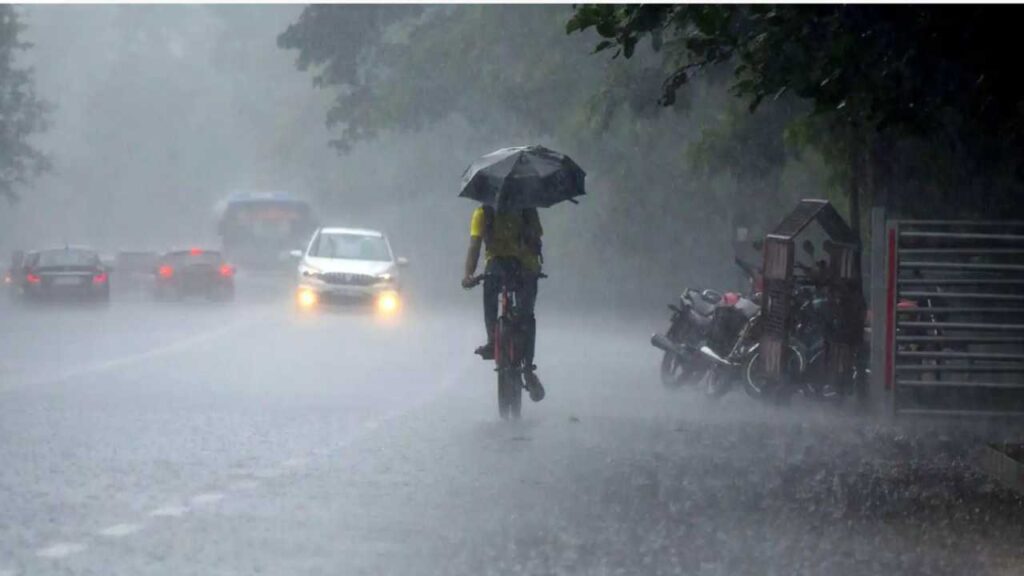
IMD’s Latest Monsoon Forecast
The India Meteorological Department (IMD) has announced that the southwest monsoon is set to arrive in Kerala by May 28, marking an early onset by several days compared to the average historical date of June 1. This development signals a promising start to the 2025 monsoon season, which is forecast to bring above-normal rainfall, particularly across southern and northeastern states of India.
According to IMD Director-General Mrutyunjay Mohapatra, early monsoon conditions have been driven by favorable oceanic parameters, including positive Indian Ocean Dipole (IOD) values and weakening El Niño influences. These indicators point to a strong and sustained rainy season that could alleviate water shortages and benefit key agricultural regions.
The early monsoon arrival is expected to have a wide-reaching impact on India’s economy, especially the agriculture sector, which employs more than 40% of the country’s population. Farmers in Kerala, Karnataka, Tamil Nadu, and Assam have already begun preparations for sowing key crops like rice, sugarcane, cotton, and pulses. Timely rains are likely to increase productivity and reduce reliance on groundwater irrigation.
The northeastern states, including Meghalaya, Arunachal Pradesh, and Tripura, are predicted to receive 10–15% more rainfall than the seasonal average. These regions are both highly dependent on monsoon rains and vulnerable to flooding. The IMD has warned local administrations to remain on alert, especially in flood-prone areas where flash floods and landslides are common during heavy rainfall.
Urban centers like Kochi, Thiruvananthapuram, and Guwahati have also begun preparing for waterlogging and traffic disruptions. The National Disaster Management Authority (NDMA) has released advisories for civic bodies to inspect drainage systems, clear stormwater drains, and stock emergency supplies. Early preparedness can significantly reduce the human and economic toll of monsoon-related disasters.
Meanwhile, the India Meteorological Department has also started deploying advanced Doppler radar systems in vulnerable areas to improve real-time weather monitoring. These upgrades are part of a broader strategy to enhance forecasting accuracy and provide timely warnings via SMS and mobile apps like ‘Mausam’ and ‘Damini.’
Economists have welcomed the news of an early and strong monsoon, citing its potential to control inflation and revitalize rural demand. Food prices, particularly for grains and vegetables, are often influenced by monsoon performance. A good monsoon usually leads to lower inflation and improved consumer spending in rural India, providing a stimulus to the broader economy.
However, experts caution that the benefits of an early monsoon depend on its spatial and temporal distribution. Uneven rainfall or long dry spells can still cause crop damage. Additionally, excess rain in short bursts may overwhelm existing infrastructure, leading to floods despite overall positive rainfall trends.
In summary, the early onset of the southwest monsoon in Kerala marks a positive beginning to the 2025 rainy season. While it brings hope for a productive agricultural cycle and a boost to the economy, it also calls for vigilance, preparedness, and effective implementation of disaster management protocols. As the rains approach, both rural and urban India must stay alert to ensure that the blessings of the monsoon do not turn into calamity.
This early onset is expected to benefit rice and sugarcane sowing across the region. Economists believe a robust monsoon could boost rural demand and help stabilize food inflation.
However, early heavy rains can also pose flood risks. The National Disaster Management Authority has issued advisories for flood-prone districts in Kerala and Assam, urging early preparedness. IMD Director-General Mrutyunjay Mohapatra emphasized that “while the monsoon brings relief, caution and readiness are critical.”
